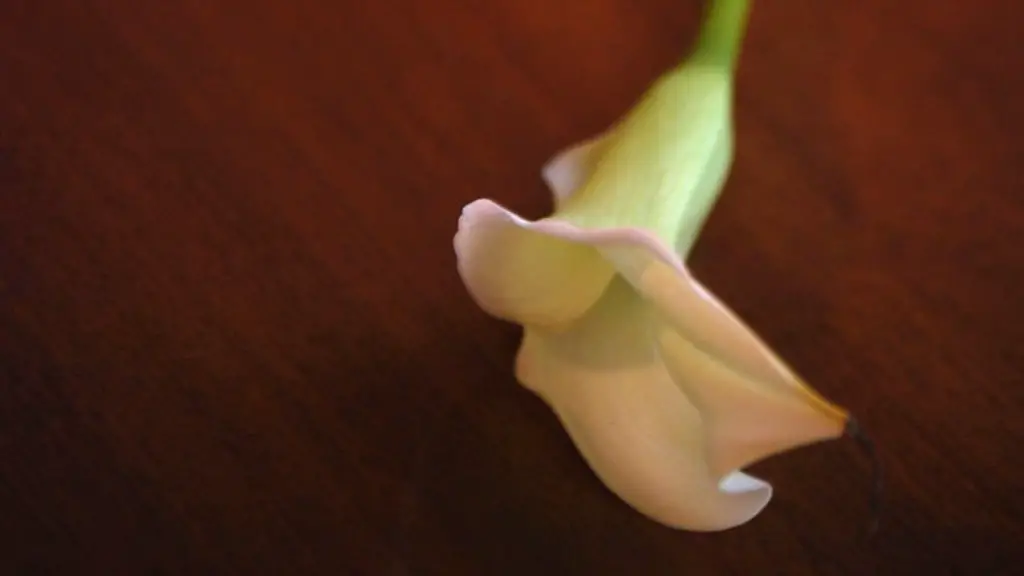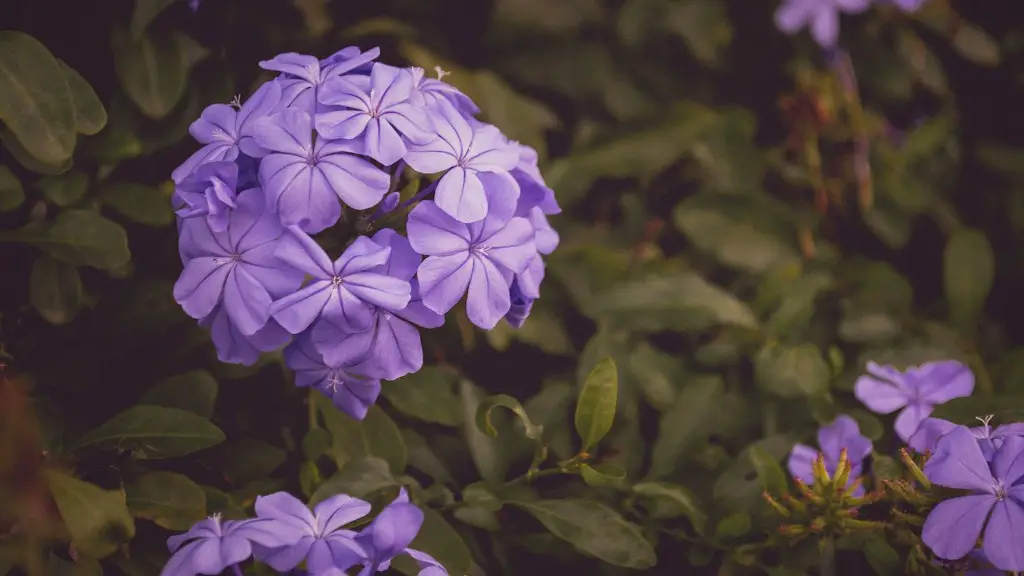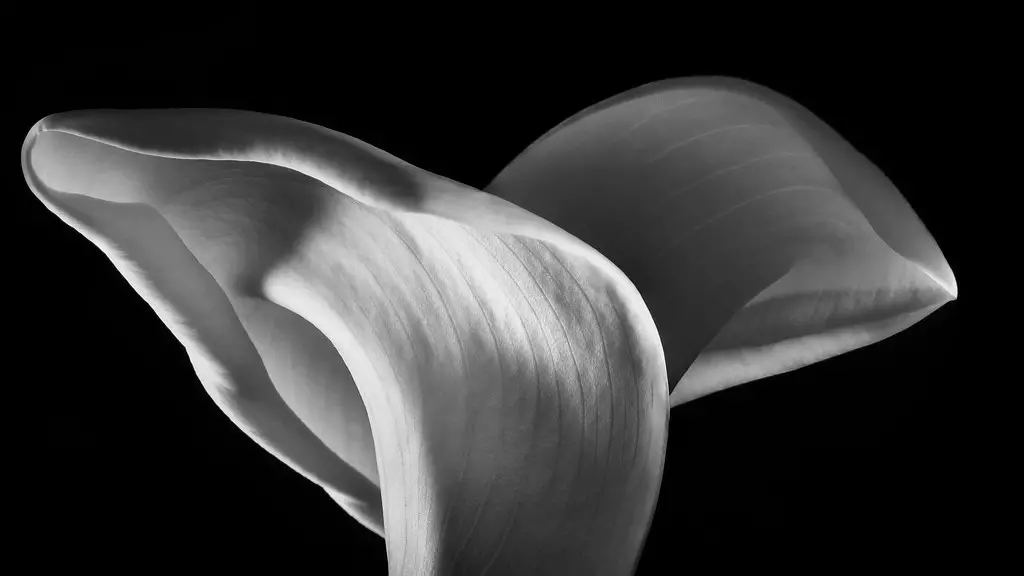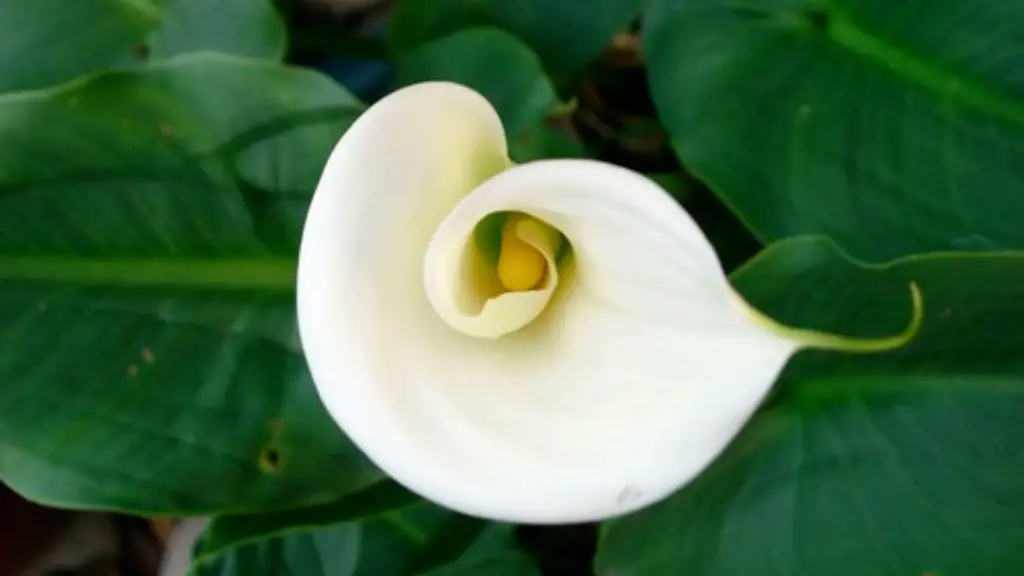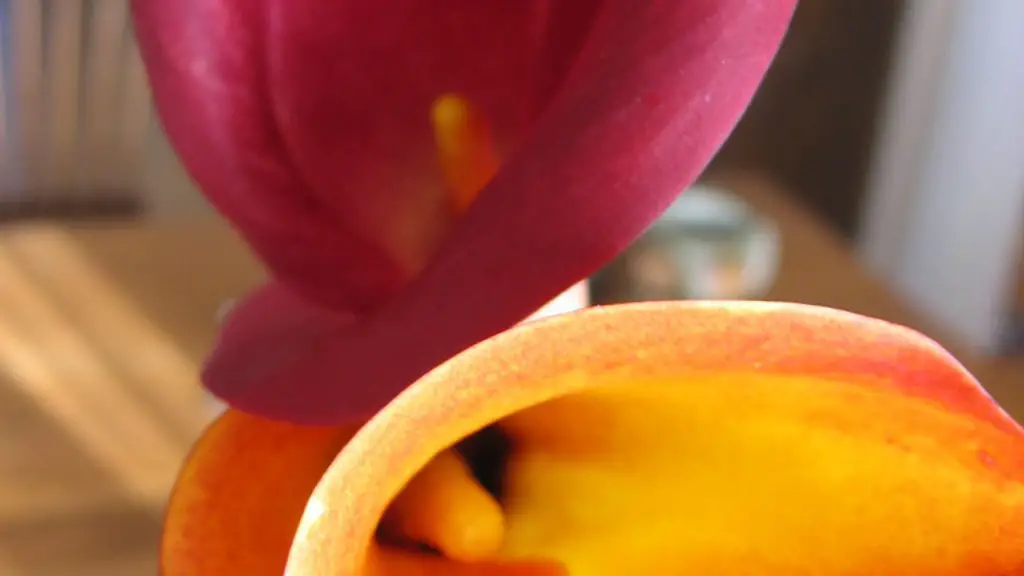A calla lily needs a pot that is at least 6 inches wide and deep. The best pot for a calla lily is one that is slightly larger than the root ball of the plant.
A calla lily needs a pot that is at least 6 inches deep and 6 inches wide.
Do calla lilies like to be pot bound?
If you notice that the roots of your calla lilies are looking slightly crowded, it’s a good indication that they’re ready for a bigger pot. Root-bound plants are not likely to thrive, so it’s best to replant them in a larger pot.
A tall, narrow pot is a better container for a calla lily than a wide, shallow one. Choose any material, from plastic to porcelain, as long as it will offer support and not tip easily.
How long do calla lilies last in a pot
The plant usually blooms for about six weeks during the late spring and early summer but may bloom at any time when indoors. Keeping the plant root bound encourages more flowers.
If you’re looking for a beautiful and low-maintenance plant to add to your home, consider the calla lily. Calla lilies grow well in pots and planters, and they make a great addition to any indoor or outdoor space. The flowers last for weeks, so you can enjoy their beauty for a long time.
How do you keep potted calla lilies alive?
Here are a few tips for caring for callas indoors:
1. Keep the soil moist, but not soggy
2. Provide bright, indirect light
3. Apply liquid fertilizer monthly while in flower
4. Keep away from heating and A/C vents
5. Reduce watering when the plant enters dormancy (November)
6. Cut the leaves off at soil level once they’ve died
Calla lily division is only necessary when the clumps start to decline, but if you want more rhizomes to fill in the garden, it’s safe to divide them every three to five years. If you divide them too often, however, they will never quite reach their full potential.
What containers can you plant with calla lilies?
Perennial calla lilies are beautiful plants that add a touch of elegance to any garden. They are also relatively easy to care for, making them a good choice for novice gardeners. When selecting companion plants for your calla lilies, look for plants that will thrive in the same conditions (e.g., partial shade and moist, well-drained soil). Some good options include ferns, astilbes, hostas, ligularias, and impatiens.
If you have a potted calla lily that has bloomed, you can save it and it will bloom again next year. All you need to do is keep the potting soil moist and cut back the leaves if they start to yellow.
How do you winterize calla lilies in pots
If you live in an area where the weather gets cold in the winter, it’s important to bring your potted calla lilies indoors before the freezing weather arrives. Calla lilies are tropical plants and will be damaged or killed if the temperature gets below 25°F. Put the pots in a sunny window to continue growing, or dig up the rhizomes and store them indoors.
To ensure your calla lilies are healthy, it is important to plant them in well drained soil and, if potted, in an unglazed pot that will allow excess moisture to evaporate. If the bulb is steeped in water, it may begin to rot and the lily will droop.
Can you overwater a calla lily?
If you’re growing calla lilies, it’s important to make sure that their roots don’t stay soaked in water. Too much moisture can cause the roots to rot, as well as contract other diseases. This will eventually cause the leaves of the plant to wither.
Seedlings can take a few weeks to emerge from the soil, but it can take two or three years for them to produce flowers. Be patient with your calla lily seedlings and enjoy watching them grow!
Do calla lilies prefer partial or full sun
daylilies are typically planted in full sun or partial shade, receiving 4-6 hours of sun per day. They can tolerate some shade, but the flowers will usually face away from it. Daylilies prefer well-drained soil and should be watered regularly.
Second, calla lily deadheading is important for growing large, healthy rhizomes to plant for next year’s flowers. Spent flowers tend to turn into seed pods, which use up resources better left for other tasks.
What does a calla lily symbolize?
The calla lily is a beautiful flower that has a lot of meaning and history behind it. On the one hand, the calla lily meaning expresses the idea of life and fertility. This is because the flower is associated with Hercules, who was a symbol of strength and virility. On the other hand, the calla lily is also a well-known symbol of death. This is because the flower is associated with the underworld and is often used in funerals.
If you need to repot your calla lilies, follow these steps:
1. Carefully lift the flowers out of their smaller pot and gently place them into the larger one, taking care not to damage the delicate roots.
2. Fill the new pot with soil up to the level of the roots.
3. Keep the soil moist consistently for a few days after repotting. Make sure the soil is not soggy or waterlogged.
How often should you water a calla lily
In summer, when the temperature is not too high, water every two days. High temperatures can cause the plant to go dormant, so you can waterless In the fall, when growth resumes. In winter, water once every 10 days.
Cut calla lilies should be placed in a clean vase with fresh, cool water.
To prolong the life of your calla lilies, add a floral preservative to the water according to package directions.
Re-cut the stems and change the water every few days.
Warp Up
A calla lily should be planted in a pot that is at least 6 inches wide and 6 inches deep.
The ideal pot size for a calla lily plant is 12-14 inches. The pot should have drainage holes to allow excess water to drain out. The plant will need to be watered regularly, especially during the warmer months. Fertilize the plant monthly with a balanced fertilizer.
